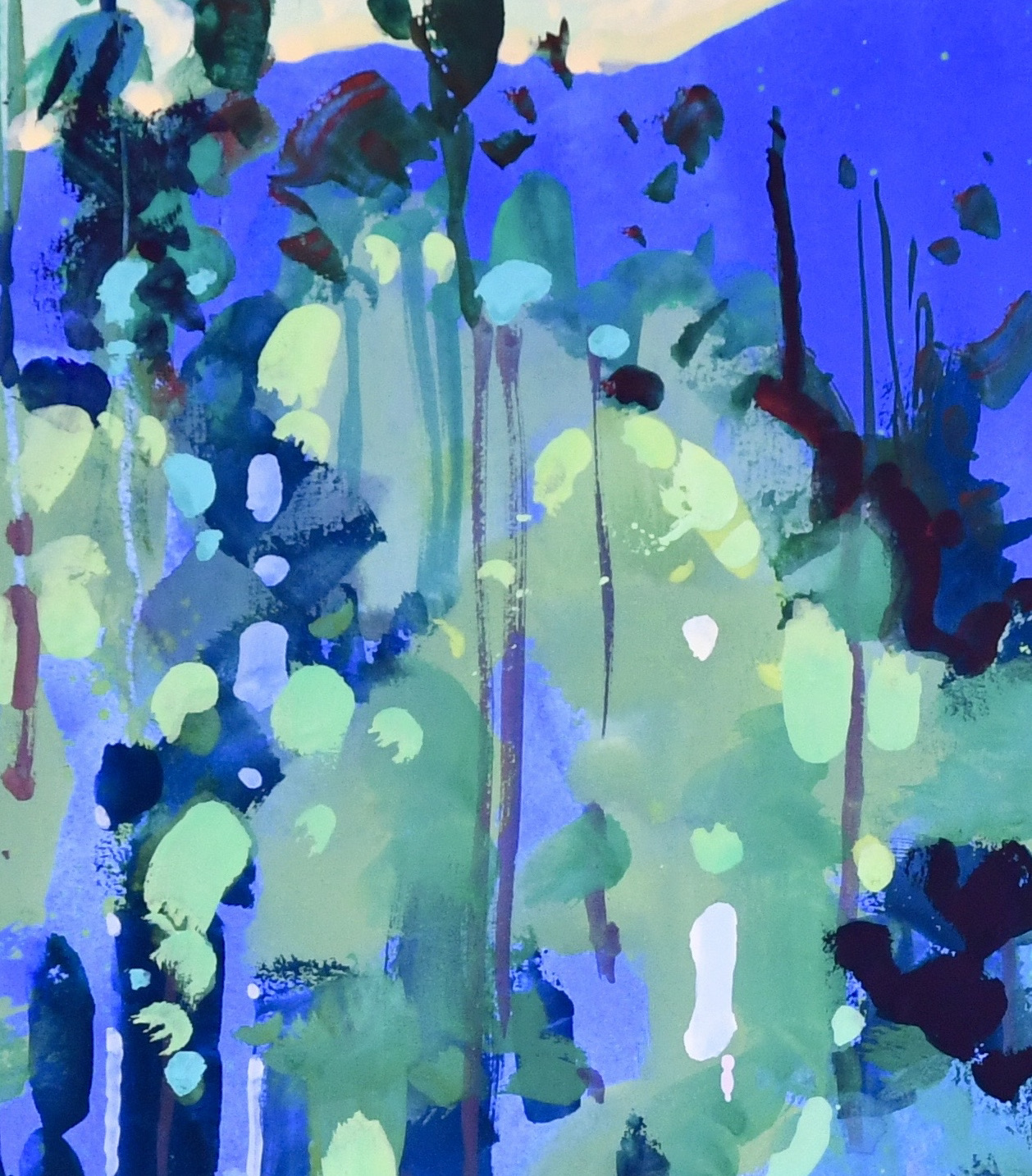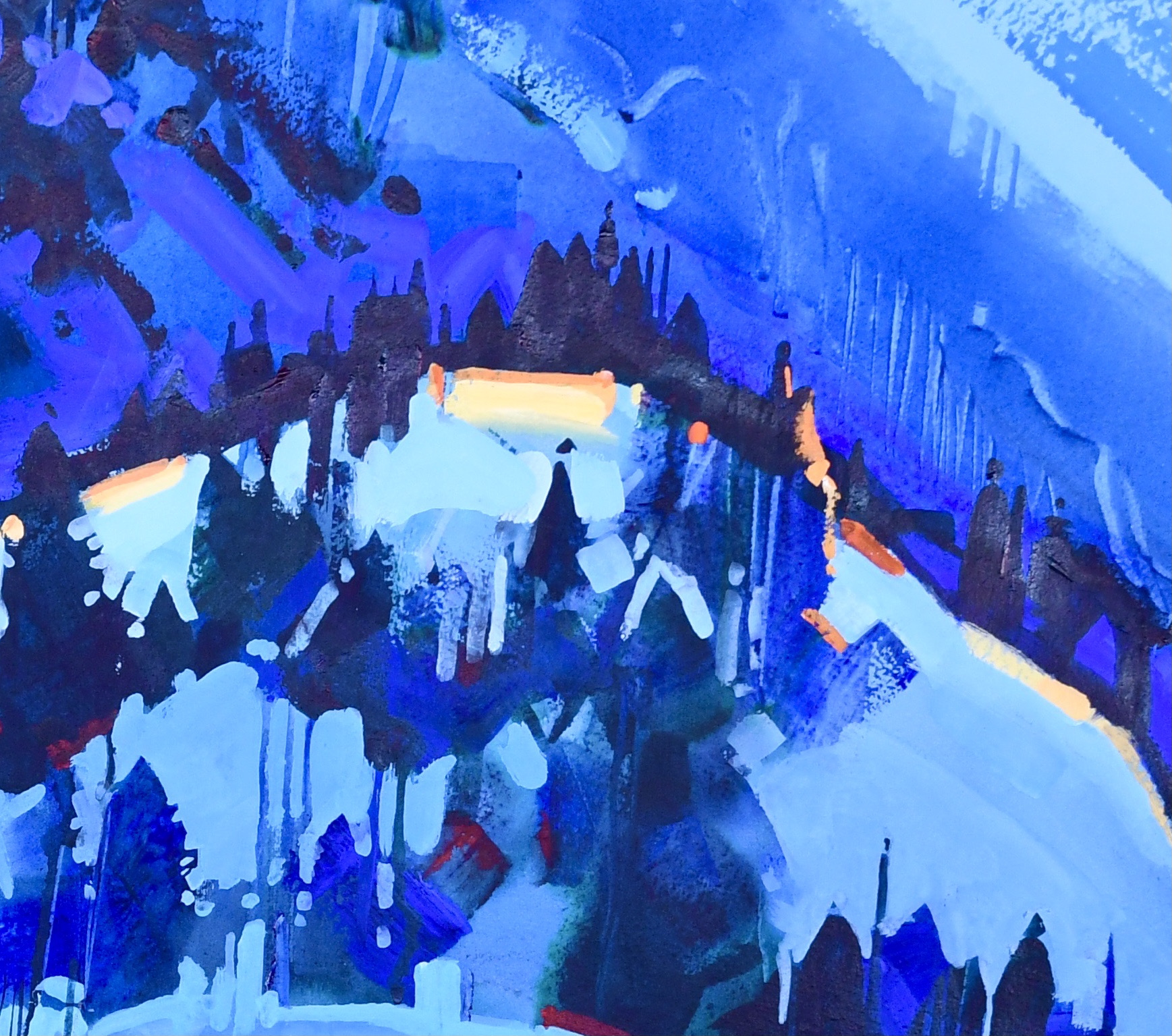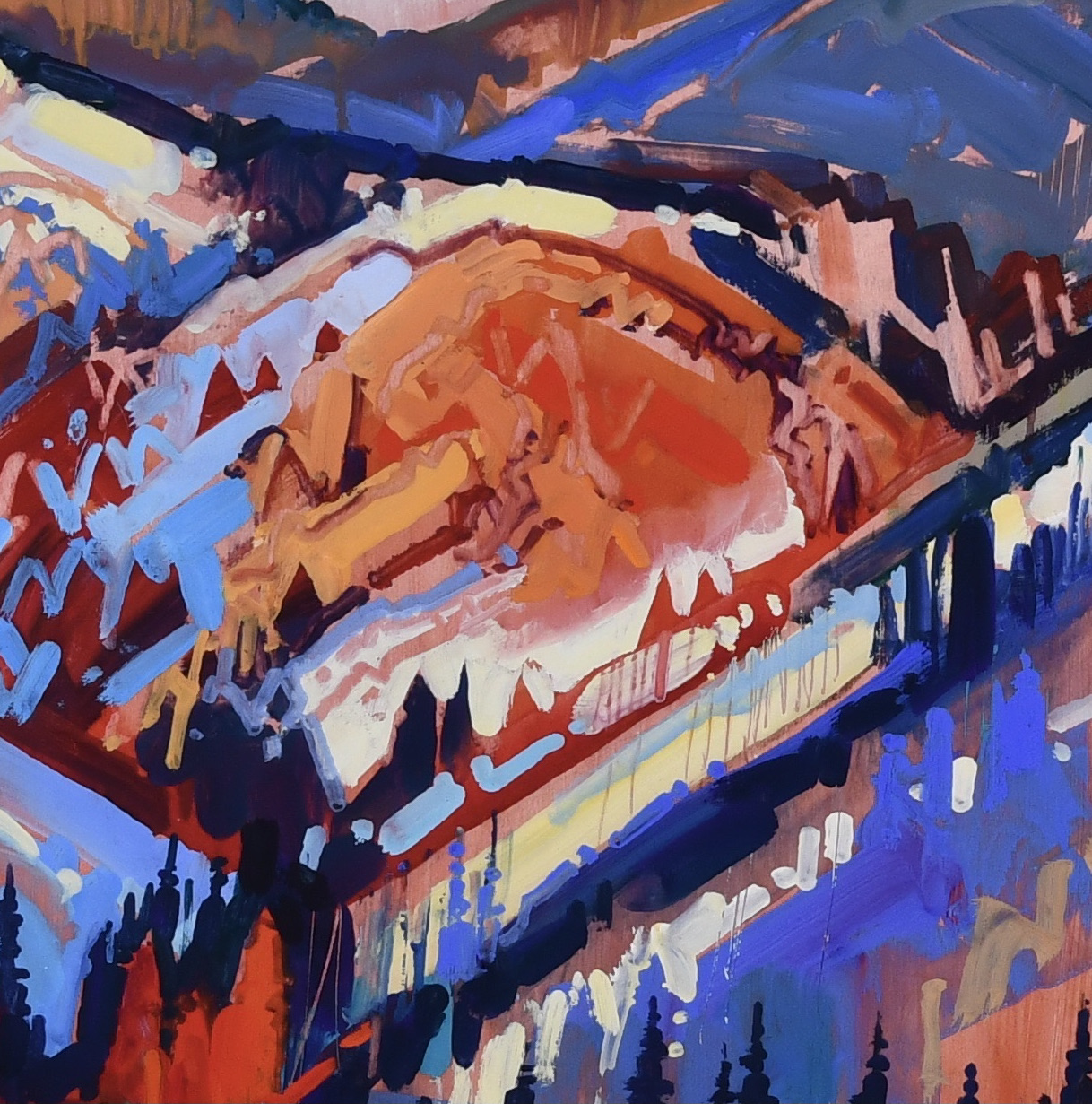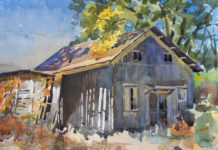Stephen Quiller uses four kinds of watermedia in the field and in the studio: acrylic, watercolor, gouache, and casein. Here, he breaks down the unique qualities of each.

WATERCOLOR
- is easily transportable when hiking a good distance to paint
- has a gum arabic binder
- is soluble when dry so the paint can be lifted
- dries lighter than when it’s first put on.
- Sedimentary granulation (as seen in the detail) can give beautiful effects.
- Cleanup is easy.
- Paintings need to be displayed with glass.

GOUACHE
- uses the same gum arabic binder as watercolor
- has a white precipitated chalk added to the pigment to give it body or opacity
- is soluble when dry and has a chalky matte visual quality
- can be used transparent, translucent, and opaque
- is ideal for small studies but not for large paintings
- should be painted on a rigid paper support such as 300-lb. watercolor paper or watercolor board
- works well in combination with watercolor.
- Quiller uses with watercolor when hiking distances.
- Paintings need to be displayed with glass.
 ACRYLIC
ACRYLIC
- has a poly-resin (plastic) binder and “the most brilliant color of all the watermedia”
- is ideal for subjects with intense color and for working in layers
- can be applied transparent, translucent, and opaque
- can be used on any non-oily support
- is insoluble once dry so beautiful transparent glazes can be applied one over another.
- Edges must be softened before drawing when working transparent.
- Quiller uses older brushes and makes sure to clean them well.
- Cleanup is more difficult.
- He uses when working close to his studio or his car.
- Paintings can be shown without glass.

CASEIN
- is a milk-based paint, which uses the protein of the curd for the binder, giving it “a beautiful, velvety-matte visual quality”
- should be used on a fairly rigid, non-oily support; when working thickly, 300-lb. watercolor paper, watercolor board, Aquabord, or wood panels are recommended.
- When first applied, the paint is semi-soluble and edges can be softened, but overpainting is still easy.
- Within about two weeks time, the paint cures and becomes insoluble.
- As with acrylic, Quiller uses older brushes and takes care to clean them well after use.
- Work can be displayed without glass.
- Cleanup is a little more difficult.
About the Artist
Stephen Quiller has painted in many parts of the world, but is primarily known for his depictions of the beaver ponds, snow shadows, water patterns, wild iris, and mountain rhythms near his home in southern Colorado.

For more inspiring stories like this one, sign up for our free weekly e-newsletter.








This is an excellent reference! Thank you to Watercolor Weekly and to Stephen Quiller.
Stephen explains these various watermedia choices SO WELL!
Many thanks!